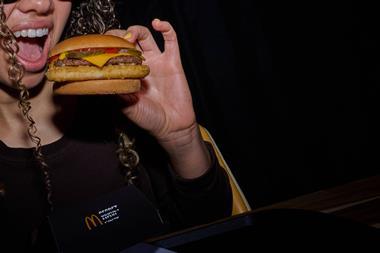With Asda’s acquisition of Netto, interest in small supers has never been greater. But success in smaller formats has proven elusive for both major mults and indies. As a new shopper insight report is published, Beth Phillips reports
Small may be beautiful, but it's not easy.
With the demise of Woolworths and The Co-operative Group's forced disposal of Somerfield stores, a number of players have tried their hands in small supermarkets. The results have been mixed.
As well as the Co-operative Group, Waitrose and Morrisons, independents such as Haldanes, Mills Group, Asco and various Spar retailers have trialed the format. Some have seen strong sales growth; for others sales have dipped. Calamitously in some cases.
Asco lasted just five months, while Haldanes, Mills and Spar wholesaler Appleby Westward have all shut some of their new small-format supers, with sales understood to be as much as 40% down. And a leaked report from The Co-op in April revealed sales at its converted Somerfields were down 12.2% year-on-year.
So is there a secret to success in this format? After a number of trials over two years, led by former BP convenience queen Karen Hubbard, Asda felt sufficiently confident in its smaller format business model to spend an eye-watering £778m acquiring 194 Netto stores earlier this year.
After disposals, the conversions are expected to begin early next year, and Asda CEO Andy Clarke has promised to offer customers the same price proposition as Asda's hypermarkets.
"You can't base the [purchase] price on current sales," he told The Grocer. "Doubling the number of staff in each store gives an indication of the level of sales expectation we have."
Asda's rollout will be closely watched, because a new report by Him! shows just what a challenge it is to convert and operate a small super. The Small Supers Tracking Programme, in association with The Grocer, involved interviews with more than 6,000 shoppers at small supermarkets (3,000 to 25,000 sq ft). Only 5% said they would visit a small supermarket for a weekly shop.
Small supers, it seems, are most valued for top-up shopping (36%), followed by distress purchases (14%). As a result, average basket size is just 6.54 items. This is around double the average convenience store, but is it enough to justify the extra overheads? One big four CEO is doubtful. "In smaller format supermarkets, you inevitably sacrifice margin."
And while average frequency per week rose from 2.7 last year to 2.9 this year, average spend was down from £14.79 a year ago to £12.25.
Him! director Tom Fender is nevertheless encouraged by the figures. "The fact that 48% visit three to four times a week or more, that's unbelievably frequent."
Encouragingly, customers are also extremely loyal. Most (77%) chose to shop at a store because it was convenient place. And crucially, 60% would continue to shop at the store if it changed its name or had new owners, with just 5% saying they would shop elsewhere.
Getting big spenders into small supers is the holy grail for retailers. Last week M&S CEO Marc Bolland insisted he was targeting full shops despite slashing the number of branded food products from 400 to 100. The cull, he said, would make room for an extra 1,000 own-label lines.
But targeting weekly shoppers at small supers is where the majority of retailers are getting it wrong, claims Tim Hurrell, managing director of food retail for The Co-op, which has about 600 small supers. "Many retailers have kept their big box mentality and tried to squeeze as much as they can into a smaller space, while we've been guilty of simply stretching our convenience proposition," he admits. "You have to understand the customer in these type of stores, why they go there, how the layout works, the service and value for money."
After carrying out extensive customer research, The Co-op now has its own term for small supermarket shopping 'mixed missions'. Mixed, says Hurrell, because unlike c-stores where customers are after distress purchases, small supers need a credible grocery range, so shoppers can purchase items to last three to four days.
With the help of Somerfield's technology, the retailer has been able to identify four separate formats for its stores forecourts, convenience, mainstream mixed mission and premium mixed mission. As a result, it is now able to tailor its ranges accordingly.
Waitrose, which is rolling out a string of smaller 'convenience' stores including two this week has focused its range on 'protein groups' after it found customers shop in its smaller stores for meal ideas. They usually start with the protein, such as chicken, and then do the rest of their shop based around the chicken, its research has found.
Availability is crucial for shoppers in small supers. Him!'s survey found 32% avoid the format for weekly shops because of a lack of products, but availability was the single-most important priority for small supers (47%).
So what about price? Value for money (34%) and cheap prices (33%) are clearly an important ingredient. And price premium has often proved a stumbling block for smaller stores. Last year, Rip Off Britain, a BBC1 programme, 'revealed' that prices in Tesco Express were 5% higher than in its larger stores.
This makes Asda's move into the sector all the more fascinating. With its acquisition of Netto, Asda's 170-strong small format supermarket estate will pale into insignificance against the likes of Tesco, Sainsbury's, M&S, as well as Iceland, Aldi, Lidl and others.
But will the use of its existing price structure force the arm of rivals? One source warns the tactic will "destabilise Asda's price position", adding that shoppers are prepared to pay more in smaller stores.
A senior industry source adds: "Asda is doing this because it can afford to. It will be a tiny element of expenditure for them and will be good PR. Indies simply won't be able to cut their prices. With smaller stores comes higher overheads and indies will need to meet them."
Small supers, small numbers?
£12.25 Average spend per visit
6.54 Average items per basket
2.9 Frequency of weekly visits
5% will visit for weekly shop
44% say availability is priority
49% drove to the store
60% would still shop at this store if the fascia changed
Source: Him! Small supers tracking programme 2010
Small may be beautiful, but it's not easy.
With the demise of Woolworths and The Co-operative Group's forced disposal of Somerfield stores, a number of players have tried their hands in small supermarkets. The results have been mixed.
As well as the Co-operative Group, Waitrose and Morrisons, independents such as Haldanes, Mills Group, Asco and various Spar retailers have trialed the format. Some have seen strong sales growth; for others sales have dipped. Calamitously in some cases.
Asco lasted just five months, while Haldanes, Mills and Spar wholesaler Appleby Westward have all shut some of their new small-format supers, with sales understood to be as much as 40% down. And a leaked report from The Co-op in April revealed sales at its converted Somerfields were down 12.2% year-on-year.
So is there a secret to success in this format? After a number of trials over two years, led by former BP convenience queen Karen Hubbard, Asda felt sufficiently confident in its smaller format business model to spend an eye-watering £778m acquiring 194 Netto stores earlier this year.
After disposals, the conversions are expected to begin early next year, and Asda CEO Andy Clarke has promised to offer customers the same price proposition as Asda's hypermarkets.
"You can't base the [purchase] price on current sales," he told The Grocer. "Doubling the number of staff in each store gives an indication of the level of sales expectation we have."
Asda's rollout will be closely watched, because a new report by Him! shows just what a challenge it is to convert and operate a small super. The Small Supers Tracking Programme, in association with The Grocer, involved interviews with more than 6,000 shoppers at small supermarkets (3,000 to 25,000 sq ft). Only 5% said they would visit a small supermarket for a weekly shop.
Small supers, it seems, are most valued for top-up shopping (36%), followed by distress purchases (14%). As a result, average basket size is just 6.54 items. This is around double the average convenience store, but is it enough to justify the extra overheads? One big four CEO is doubtful. "In smaller format supermarkets, you inevitably sacrifice margin."
And while average frequency per week rose from 2.7 last year to 2.9 this year, average spend was down from £14.79 a year ago to £12.25.
Him! director Tom Fender is nevertheless encouraged by the figures. "The fact that 48% visit three to four times a week or more, that's unbelievably frequent."
Encouragingly, customers are also extremely loyal. Most (77%) chose to shop at a store because it was convenient place. And crucially, 60% would continue to shop at the store if it changed its name or had new owners, with just 5% saying they would shop elsewhere.
Getting big spenders into small supers is the holy grail for retailers. Last week M&S CEO Marc Bolland insisted he was targeting full shops despite slashing the number of branded food products from 400 to 100. The cull, he said, would make room for an extra 1,000 own-label lines.
But targeting weekly shoppers at small supers is where the majority of retailers are getting it wrong, claims Tim Hurrell, managing director of food retail for The Co-op, which has about 600 small supers. "Many retailers have kept their big box mentality and tried to squeeze as much as they can into a smaller space, while we've been guilty of simply stretching our convenience proposition," he admits. "You have to understand the customer in these type of stores, why they go there, how the layout works, the service and value for money."
After carrying out extensive customer research, The Co-op now has its own term for small supermarket shopping 'mixed missions'. Mixed, says Hurrell, because unlike c-stores where customers are after distress purchases, small supers need a credible grocery range, so shoppers can purchase items to last three to four days.
With the help of Somerfield's technology, the retailer has been able to identify four separate formats for its stores forecourts, convenience, mainstream mixed mission and premium mixed mission. As a result, it is now able to tailor its ranges accordingly.
Waitrose, which is rolling out a string of smaller 'convenience' stores including two this week has focused its range on 'protein groups' after it found customers shop in its smaller stores for meal ideas. They usually start with the protein, such as chicken, and then do the rest of their shop based around the chicken, its research has found.
Availability is crucial for shoppers in small supers. Him!'s survey found 32% avoid the format for weekly shops because of a lack of products, but availability was the single-most important priority for small supers (47%).
So what about price? Value for money (34%) and cheap prices (33%) are clearly an important ingredient. And price premium has often proved a stumbling block for smaller stores. Last year, Rip Off Britain, a BBC1 programme, 'revealed' that prices in Tesco Express were 5% higher than in its larger stores.
This makes Asda's move into the sector all the more fascinating. With its acquisition of Netto, Asda's 170-strong small format supermarket estate will pale into insignificance against the likes of Tesco, Sainsbury's, M&S, as well as Iceland, Aldi, Lidl and others.
But will the use of its existing price structure force the arm of rivals? One source warns the tactic will "destabilise Asda's price position", adding that shoppers are prepared to pay more in smaller stores.
A senior industry source adds: "Asda is doing this because it can afford to. It will be a tiny element of expenditure for them and will be good PR. Indies simply won't be able to cut their prices. With smaller stores comes higher overheads and indies will need to meet them."
Small supers, small numbers?
£12.25 Average spend per visit
6.54 Average items per basket
2.9 Frequency of weekly visits
5% will visit for weekly shop
44% say availability is priority
49% drove to the store
60% would still shop at this store if the fascia changed
Source: Him! Small supers tracking programme 2010















No comments yet